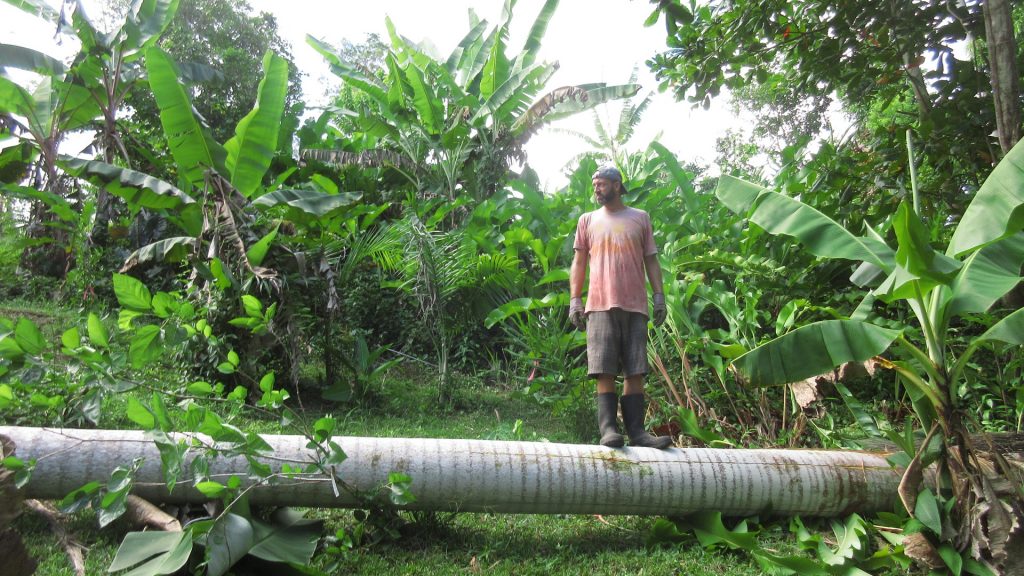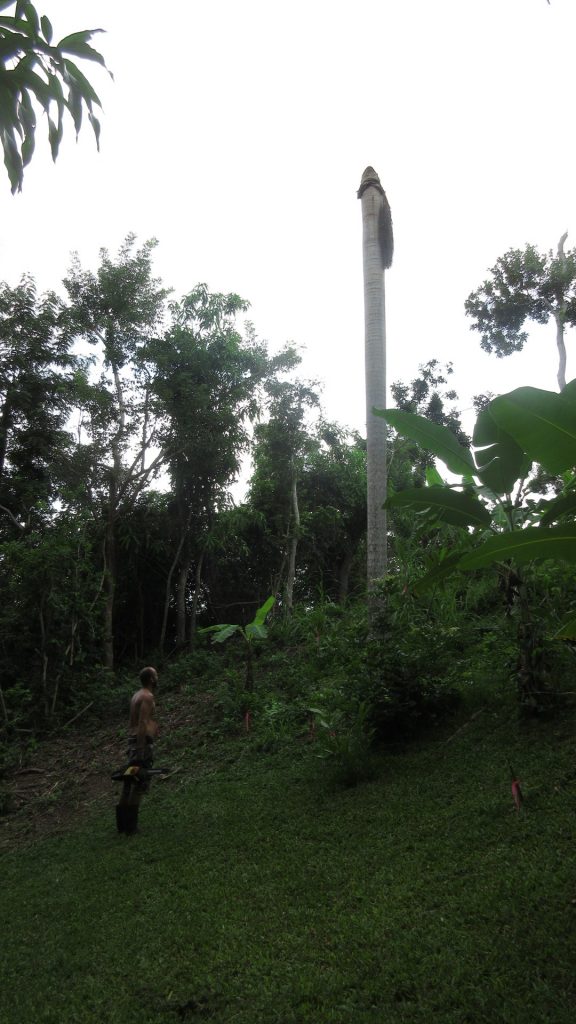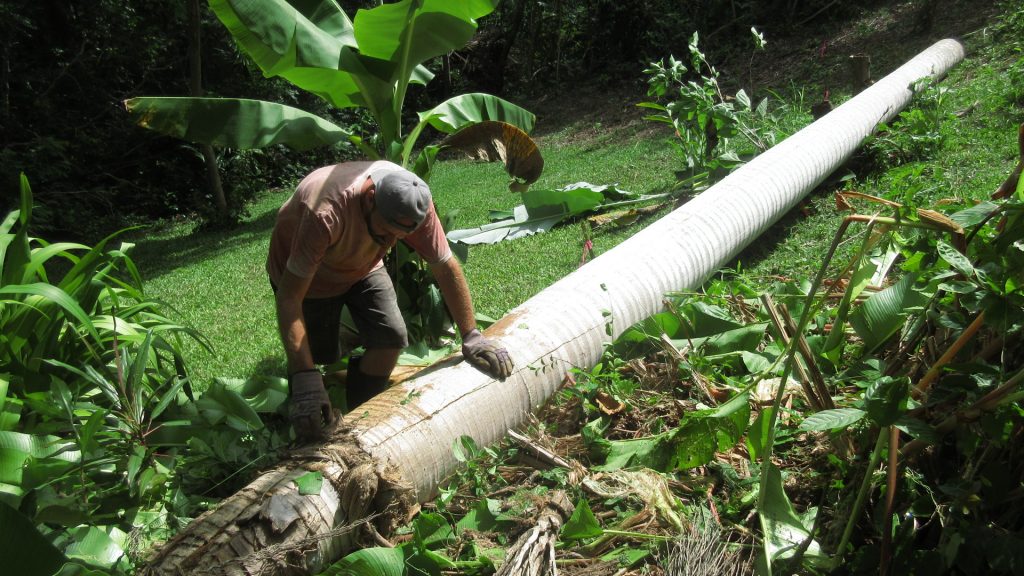Mowing the lawn in Greeley used to take 40 minutes. Now it takes several days after months of clearing and replanting. When we first arrived at the property we were greeted with lots and lots of overgrowth. It took quite a bit of work in order to just pull the car in, or for us to get to the cabana. We were hacking and slashing our way thru the forest bit by bit. Well that basically hasn’t stopped.
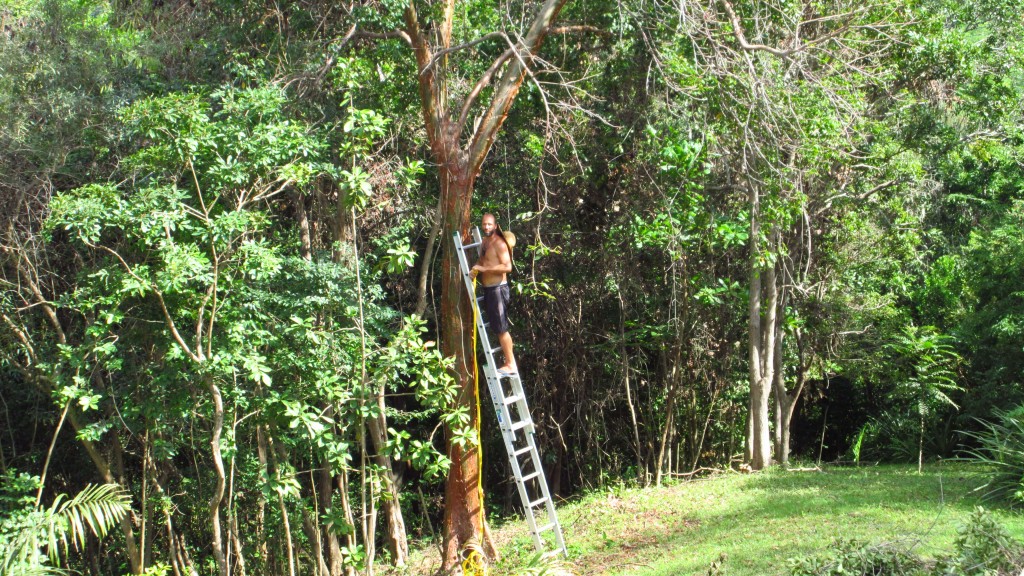
Latest Section Being Cleared
We have been getting better and better at the art of cutting down the mess that one could call the forest. We are better at seeing valuable (to us) trees and better at using less effort to clear. In this endeavor we have also narrowed down our tools to just a few. The chainsaw, the loppers, machete and once things have been whacked down we use the lawnmower and the shears. I don’t use the weed whacker anymore at all.
We hired a neighbor for a day a while back who was seeking work to come clear some areas that had become over-run with vines. I watched him use his machete and learned that it is far easier to use on over grown slopes than a weed whacker. It is simple, uses no gas and is easy to keep sharp with a file. For the non sloped areas we just use the mower and when we clear new sections we clear to the point where I can actually run the lawn mower across it. It makes maintenance easy(ish).
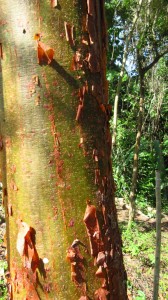
Tourist Tree
We have a lot of these fast growing soft wood trees. They are bursera simaruba also known as gumbo-limbo or turpentine. The best name for them we know of however is the “Tourist Tree” because when the bark is exposed to sunlight it peels like a sunburn.
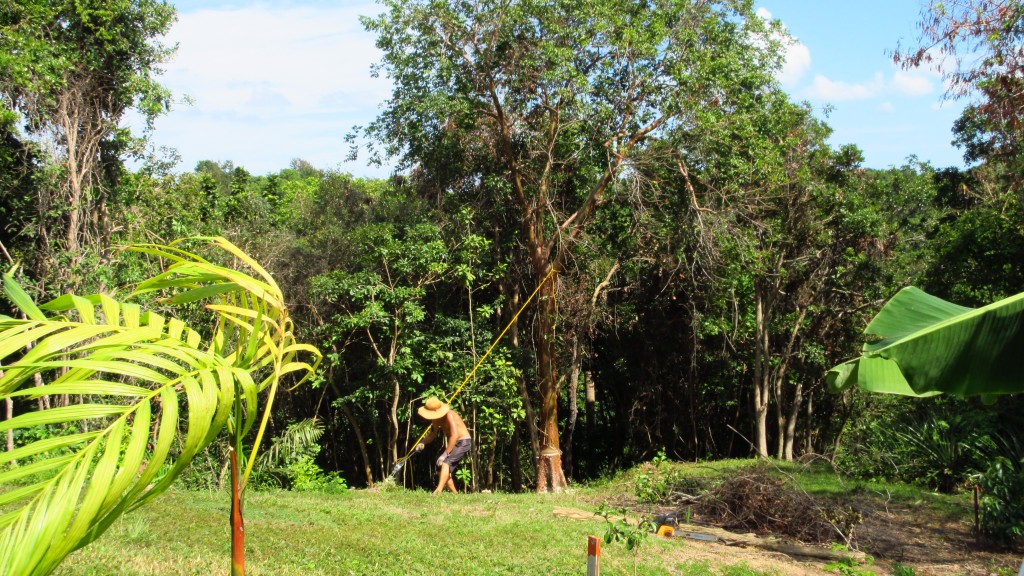
Using a Comealong to Help Direct the Fall of a Tourist Tree
We have been working on an area ‘down below’ on and off for months now stopping for a while to dismantle the wood house. The area is far larger than our whole property in Greeley was. So from a landscaping perspective every section we work on is a massive project for us. We start by taking down the brush (anything that can be cut with the loppers or machete), then we start taking down the larger trees. Once that is done we have to clean the ground, plant grass then plant new trees and ornamentals. In any given area there are hundreds of trees that are anywhere between an inch in diameter to a few feet.
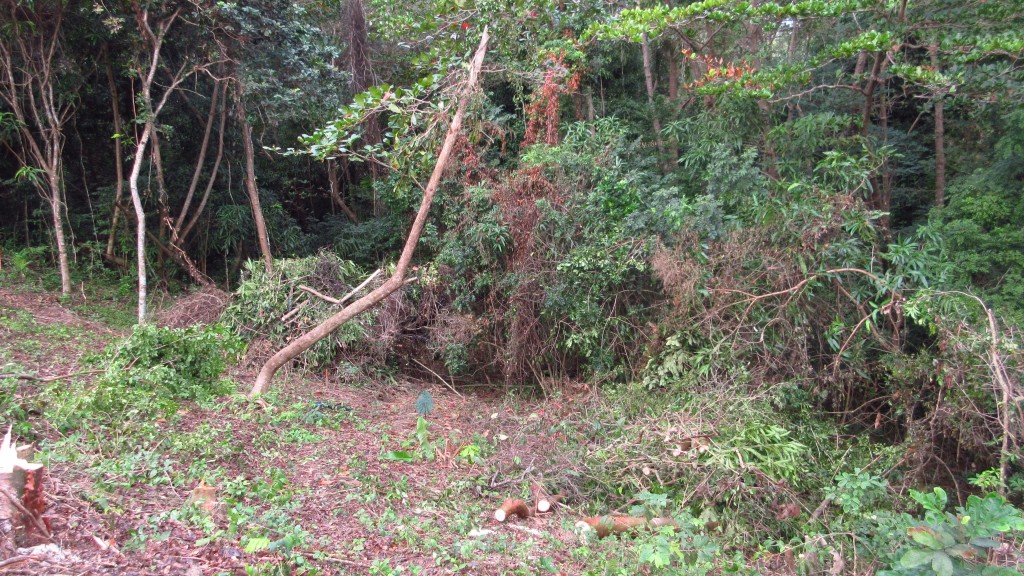
To the Edge Cleared and the next section of brush
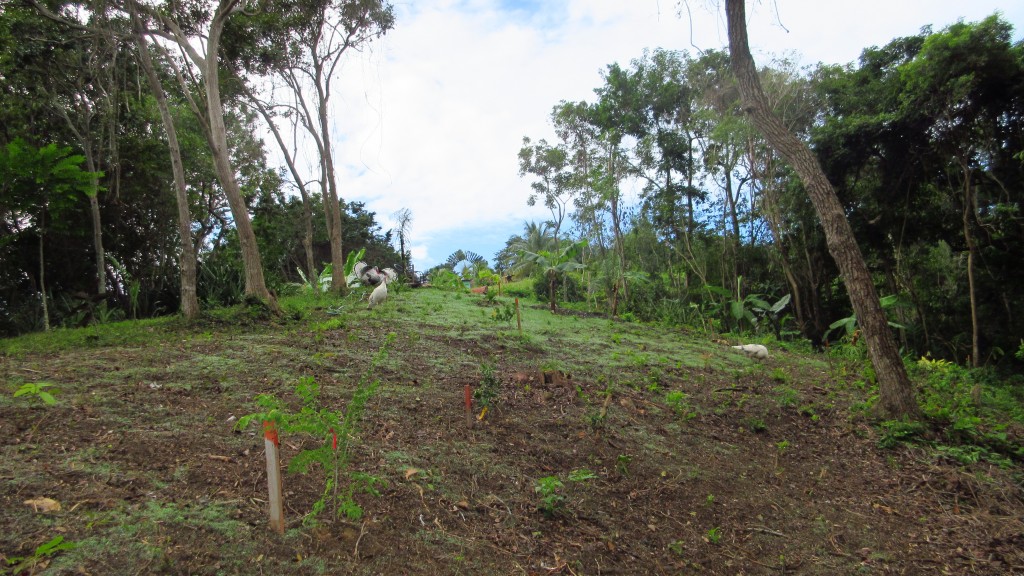
Cleared and First Stage Replanted with Grass Seed and Fruit Trees -Next Ornamentals
In doing this we have also learned to plan for where all the debris will be. If it can be downhill, all the better. Moving logs any distance will quickly tire us out. The debris piles start to become HUGE (usually 10-12 feet high and at least as wide). I try to drop trees so they fall directly on the pile if possible. The trees are almost always completely overgrown at the top with vines which connect all of the trees into one. This situation makes planning and cutting more difficult and sometimes we have to drop 5 or more large trees at the same time in order to get them down. It is a real mess but eventually you get through it all.
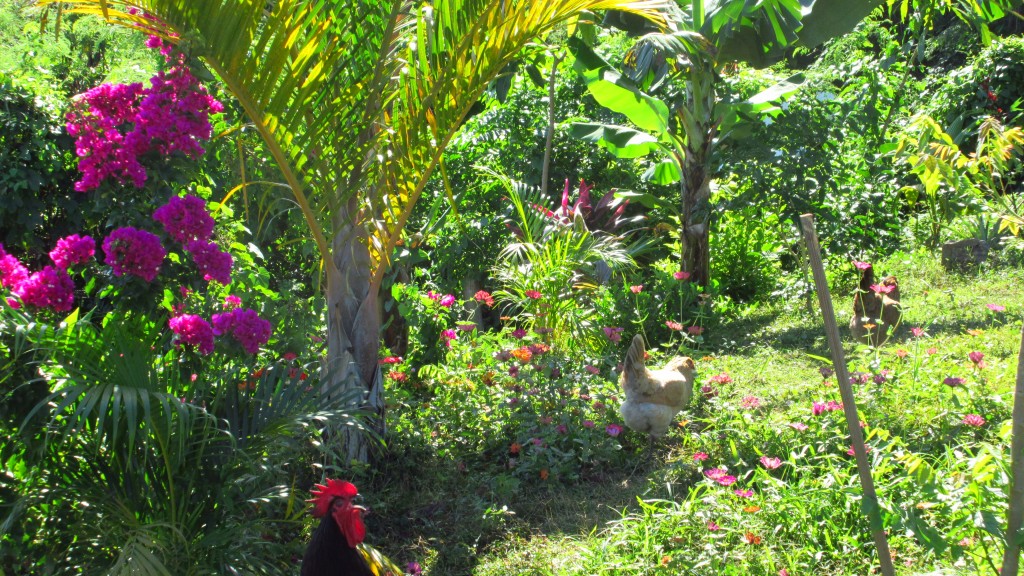
Color, texture, depth and movement is what we like most in the gardens
Once the area is cleared the hardest work is done and it quickly fills up with new trees of our choosing (mainly common and exotic tropical fruit trees) and grass so that the weeds and vines don’t start growing again. We have also started to plant more ornamentals (heliconias and gingers, bromeliads, palms, trinitaria, cruz de malta, etc) to add some depth and color to the yard. The space goes from an impenetrable mess to a wide open usable and planted garden.
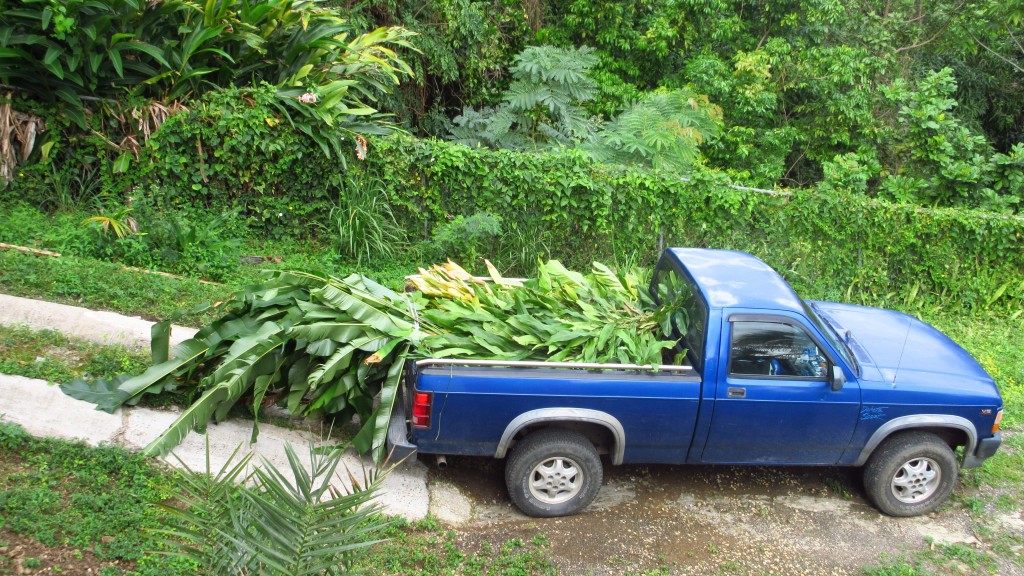 Another Truckload and a Half of Foraged Ornamentals Ready to Plant
Another Truckload and a Half of Foraged Ornamentals Ready to Plant
We have been lucky to be able to find gardens from friends that have started new growth which we dig up and bring home. It will take many truckloads to fill in and replace what we cut out. If you don’t replant something quickly everything you don’t want will grow back in short order. This past year we have been mainly focused on getting fruit trees planted and growing and have only just begun to plant flowers, hedges, palms and other ornamentals, but we are slowly adding more and more.
